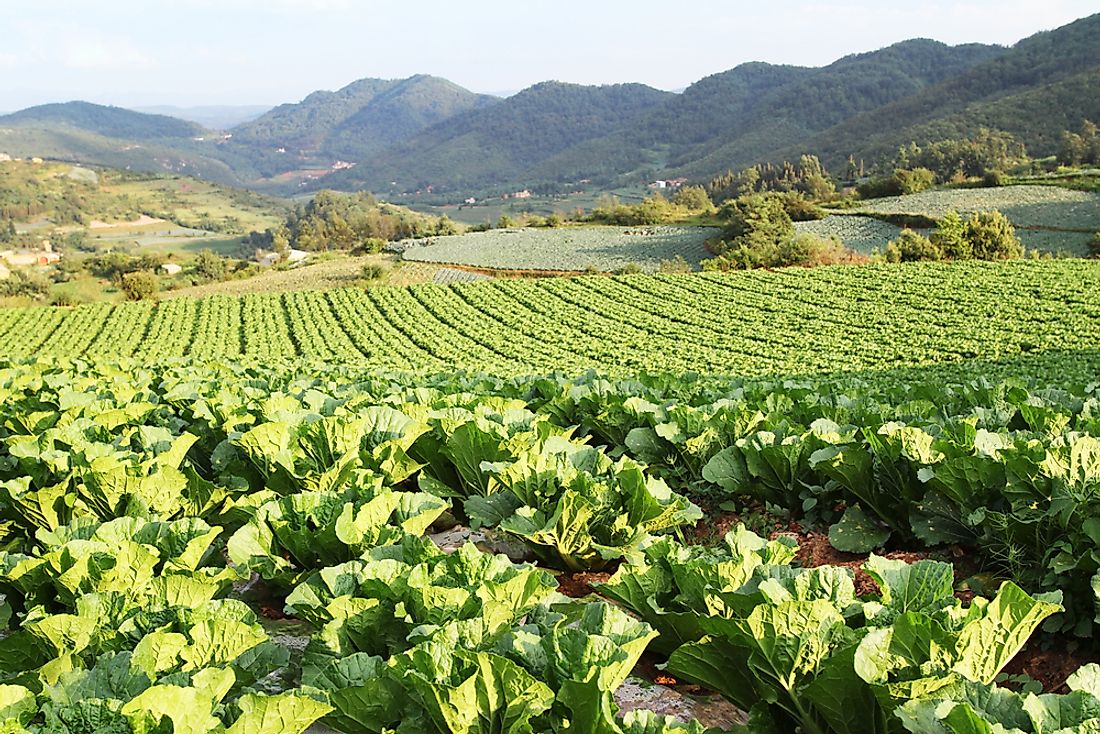Top Asian Countries For Organic Farming

The United States Department of Agriculture (USDA) defines organic farming as a system which excludes the use of synthetic inputs. Synthetic inputs include hormones, pesticides, fertilizers, and animal feed. Farmers avoid using the synthetic inputs because their effects are detrimental to the long term crop yields, soil fertility, and quality of food products. The use of artificial fertilizers results in acceleration of the process of soil mineralization. They also destroy the natural vegetation leading to soil erosion. In Asia, the top three organic farming nations by land area are China, India, and Kazakhstan.
Top Asian Countries for Organic Farming
China
The country with the largest area dedicated to organic farming in Asia is China. The area covered by organic farms amounts to 1.9 million hectares of land. After the US, France, and Germany, China is the 4 the largest consumer of organic food. Until recent years, China did not place a lot of emphasis on organic farming. The practice of conventional farming was prevalent leading to concerns regarding food safety. The concerns came due to the over-utilization of fertilizers and harmful chemicals. Presently, there has been a shift from conventional to organic farming. Organic farming focuses on the soil health, quality of water, and a climate-smart approach.
India
Approximately 500,000 hectares of land in India is used for organic farming. One of the reasons for the increased organic farmers is the increased world population. Other factors include consumers becoming more conscious of their health and the campaigns to promote sustainable agricultural production. Due to these factors, India has many successful organic farms such as The Farm, Back2Basics, Happy Hens Farms, ABC Farms, and Vridavan Farms among others. The benefits of organic farming in India include less need for mechanization, reduced costs of farming, and quality products.
Kazakhstan
Kazakhstan enjoys a substantial amount of government support in organic farming. The country has about 291,203 hectares of land used for organic farming. There are two ministries in charge of the organic agriculture department namely the Ministry for Investment and Development and Ministry of Agriculture. Through these ministries, organic farming has received increased government funding. Organic farming in Kazakhstan is becoming increasingly popular due to the growing demand for organic products, availability of large tracts of agricultural land, and comparative advantage such as low labor costs. Organic farmers engage in both horticulture and cattle farming some of which are exported. As of 2015, Kazakhstan’s market for organic products was valued at US$500 million.
Challenges of Organic Farming
A major challenge in organic farming in Asia relates to legislation. For instance, most nations lack a local organic certification procedure. The other challenge is the confusion that ensues between foods labeled “natural” and those that are labeled “organic.” With time, countries will most certainly develop these legislations and apply them to organic farming to encourage organic farming in Asia.
Top Asian Countries For Organic Farming
| Rank | Country | Organic Farming (hectares) |
|---|---|---|
| 1 | China | 1,900,000 |
| 2 | India | 500,000 |
| 3 | Kazakhstan | 291,203 |
| 4 | Indonesia | 88,247 |
| 5 | Philippines | 80,974 |
| 6 | Iran | 42,634 |
| 7 | Vietnam | 36,285 |
| 8 | Thailand | 32,577 |
| 9 | Korea | 25,467 |
| 10 | Timor-Leste | 24,690 |











